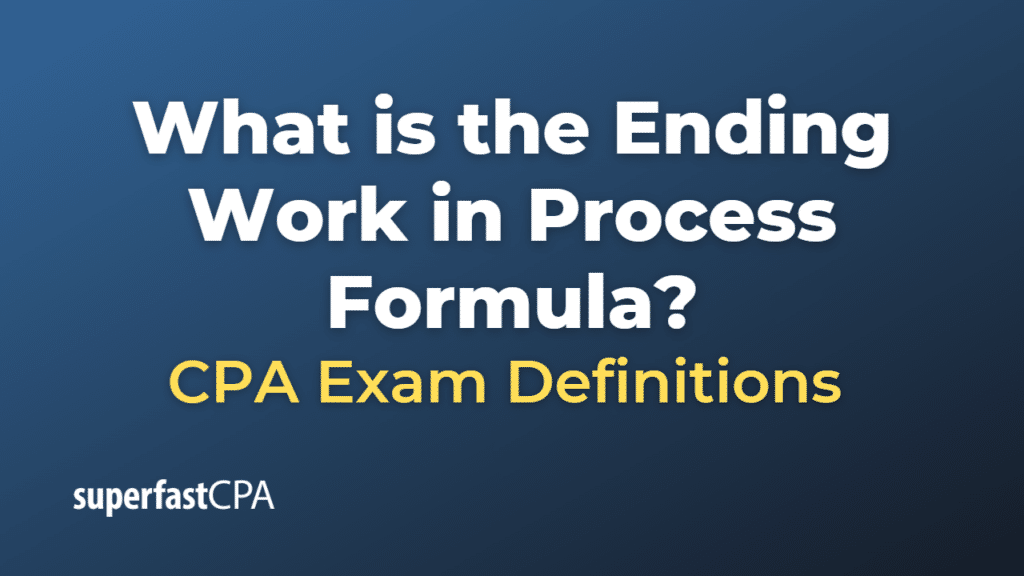Ending Work in Process Formula
The Ending Work in Process (WIP) formula calculates the cost of partially completed goods at the end of an accounting period. These goods are not fully finished and thus can’t be recognized as finished goods in the inventory.
The formula is as follows:
Ending WIP = Beginning WIP + Total Manufacturing Costs – Cost of Goods Manufactured (COGM)
Here’s what each term represents:
- Beginning WIP: This is the cost of the unfinished goods carried over from the previous accounting period.
- Total Manufacturing Costs: This includes all costs associated with production in the current period, such as direct materials used, direct labor, and manufacturing overhead.
- Cost of Goods Manufactured (COGM): This represents the total production cost of goods that were completed during the current accounting period.
By subtracting the cost of goods manufactured from the sum of beginning WIP and total manufacturing costs, you can determine the cost of goods that are still in process at the end of the period.
This calculation is important because it helps companies monitor production costs, track inventory levels, and plan for future manufacturing needs. It’s most commonly used in industries that have lengthy production processes, like construction, or industries that custom-produce goods to individual customer specifications.
Example of the Ending Work in Process Formula
Let’s assume a furniture manufacturing company had $10,000 worth of unfinished goods (Beginning WIP) at the start of the quarter.
During the quarter, the company incurred total manufacturing costs of $80,000. This includes all direct materials, direct labor, and manufacturing overhead.
By the end of the quarter, the company completed manufacturing processes worth $70,000 (Cost of Goods Manufactured).
Now, to calculate the Ending Work in Process (WIP), we’ll use the formula:
Ending WIP = Beginning WIP + Total Manufacturing Costs – Cost of Goods Manufactured
Plugging in the values:
Ending WIP = $10,000 (Beginning WIP) + $80,000 (Total Manufacturing Costs) – $70,000 (Cost of Goods Manufactured) = $20,000
Therefore, the company would report an Ending WIP of $20,000 for the quarter. This represents the cost of goods that were still not finished at the end of the quarter and will be carried forward to the next period.













